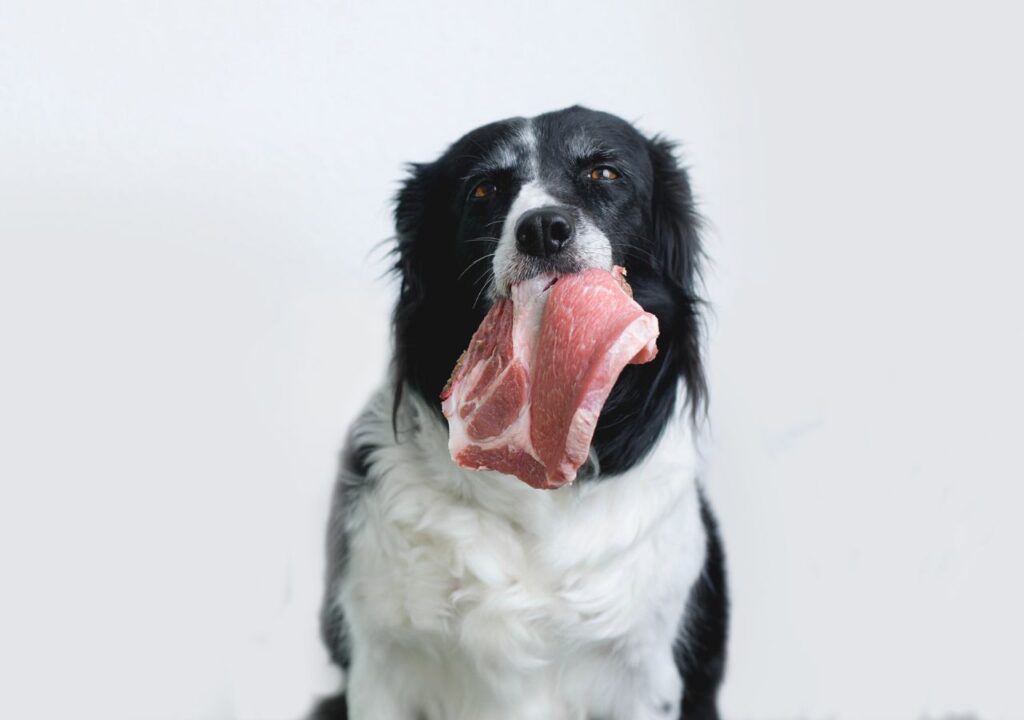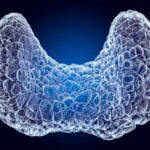Are you tired of watching your dog fuss over a bowl full of dry food and then struggle with digestive problems? Do you see that the condition of the coat is far from ideal, and the test results are not particularly optimistic? As one of the first animal nutritionists in Poland, I will advise you on how proper nutrition designed specifically for your pet can improve its health and well-being, and save you stress and unnecessary visits to the vet. But let’s start with the basics. Why is there so much talk about raw meat and natural solutions? Because dogs, like their wolf ancestors, make the best use of the ingredients in food that has not been heavily processed. However, BARF is not just about throwing a piece of raw meat into a bowl. It is a well-thought-out nutritional strategy which, if well-balanced, can significantly improve a dog’s condition in a short period of time.
Let’s start with the definition. BARF (Biologically Appropriate Raw Food) is raw food that is biologically appropriate for dogs. The idea is simple: allow the dog to eat food similar to what its wild ancestors would have eaten – meat, bones, offal, a small amount of vegetables and fruit, and possibly eggs and certain supplements.
- There are no chemicals, unnecessary preservatives or excessive processing.
- Everything is based on the dog’s natural metabolism.
- BARF for dogs is a kind of return to basics, but with modern knowledge about the nutritional needs of our four-legged friends.
The result? Improved immunity, aided digestion, a shinier coat, and improved well-being. Contrary to fears that “raw meat is full of germs” and “a dog won’t get enough to eat,” statistics and the experiences of many pet owners show that BARF for dogs is not just a trend, but a beneficial approach to nutrition.
BARF Dog Food – Principles and Benefits
BARF dog food is based on the following products:
- Raw meat and bones – the main source of protein, fat and minerals (bones are not a mandatory part of the diet).
- Offal – rich in vitamins (e.g. liver, kidneys, heart, stomach).
- Vegetables and fruits – a small addition that provides fiber.
- Supplements – fish oils, yeast, algae (e.g. Ascophyllum nodosum), vitamin E and others to make up for any deficiencies.
This combination gives your dog exactly what he needs in optimal proportions, without unnecessary fillers, flavor enhancers or preservatives.

Why choose a BARF diet?
- Better digestibility – raw food is easier for dogs to digest than dry, highly processed food.
- Reduced risk of allergies – you know exactly what is going into your dog’s food. If your dog is allergic, you can easily eliminate problematic ingredients.
- Optimal weight control – the absence of grains and artificial fillers helps to maintain a healthy figure.
- Excellent health parameters – many dogs on BARF have better diagnostic test results, significantly reduced inflammation, and increased vitality.
BARF Diet for Dogs: Recipes – Is It Complicated?
Many people think that the BARF diet for dogs is a set of recipes that requires hours in the kitchen, analyzing nutritional tables with a calculator in hand. The reality is different – yes, in the beginning it is worth learning the basics, but later on you do certain things automatically.
- The basis is a variety of meats – poultry, beef, pork, veal and even venison (although caution and freezing is sometimes recommended here). Dogs need different amino acids and fatty acids, which can be found in a variety of meats.
- Fish can be added a few days a week – a source of omega-3 fatty acids and vitamin D. Offal (e.g. liver, heart) – a source of vitamins and minerals.
- Vegetables and fruits – blended and cooked so the dog can digest them. This is not a large percentage of the diet, so don’t worry too much. A few “spoonfuls” of vegetables such as squash, carrots, and zucchini are enough.
- Meat bones – raw, in the right amount – largely replace synthetic calcium supplements. However, they are an optional element because they can be replaced with a calcium supplement such as natural eggshell meal.
The key is the ratio and quality of the products. A BARF diet should not be monotonous. The goal is to provide the dog with all the necessary micro- and macro-nutrients over the long term.
BARF for dogs: How to start without stress or problems?
Are you worried that your dog will not accept raw meat? Worried about upset stomach? Here are some practical tips:
- Introduce gradually – if your dog has only been eating dry food, start with small portions of raw food (such as turkey). Watch the reaction.
- A day off (starvation) – some recommend a 24-hour break from eating to give the dog time to “clean out” the digestive tract of food residue. Then feed the first BARF meal.
- An easy start – choose 1-2 cuts of meat, no bones or offal to start. Give the dog a few days to adjust.
- Add a probiotic to protect against food stress.
- Add more ingredients. After a week, you can introduce offal or vegetables. It is best to introduce bones when the dog digests meat well and has no digestive problems.
- Observe your dog – poop, vitality, coat condition, appetite, behavior. This is the best indicator of whether things are going in the right direction.
Remember, especially with serious illnesses or allergies, it is worth consulting a BARF dog nutritionist to make sure everything is going right.
BARF Dog Food – Frequently Asked Questions
Is this diet only for healthy dogs? What about puppies and older dogs? The BARF diet works for dogs of almost any age and with a variety of medical conditions (e.g., liver, intestinal, kidney) because it can be tailored to your dog’s specific needs. Of course, in the case of chronic conditions, it is advisable to plan meals more carefully, often in consultation with a veterinarian and pet nutritionist.
BARF for dogs: how does it work in practice?
Many people give up on BARF because they think it means buying fresh meat every day and standing at the cutting board. But it can be simplified:
- Plan a weekly menu – determine how much meat and supplements your dog will need in 7 days.
- Buy in bulk – do your weekly (or bi-weekly) shopping all at once. Stock up on a variety of meats, offal and fish.
- Portion and freeze – At home, divide the meat into daily portions in bags or containers. Label them (type of meat and date of freezing).
- Defrost the day before – take the bag out of the freezer and put it in the fridge overnight so you have a meal ready to go in the morning.
- Fruits and vegetables – you can blend larger quantities every few days and store them in sealed containers in the refrigerator.
This way, preparing a meal often takes only a few minutes or less each

BARF for dogs: What is it and what should you feed it?
Debunking the myths You may have heard that BARF is just a fad, that dogs will become aggressive if they eat raw meat, or that raw bones will definitely hurt them. Let’s put the myths to the test:
- Aggression is a lie. Thousands of dogs eat BARF and show no aggression. Most of the time, it is due to the dog’s upbringing, genes and psyche, not the diet.
- Bones in the diet – Fact: Cooked bones can break into sharp pieces and are dangerous. But the dog will chew on raw (meaty) bones, which clean the teeth and provide calcium.
- Supplementation is difficult – Myth: It is enough to know a few basics: salmon oil (omega-3), seaweed (iodine), yeast (B vitamins), and a few others. With time, it will become second nature.
- Bacterial problems – choose reliable meat suppliers and pay attention to hygiene (washing hands, containers). Dogs have much stronger stomach acids than humans and can usually handle bacteria much better.

BARF Dog Food – What Ingredients Should You Avoid?
Has anyone told you that because it’s a raw diet, you can feed your dog whatever’s in the fridge? Here are the ingredients to avoid:
- Cooked bones – risk of breakage and dangerous splinters.
- Meat of unknown origin, especially Category III – risk of parasites and contamination, choose proven supplies.
- Grains – are avoided in BARF; dogs do not digest them well and excess carbohydrates can lead to weight gain or allergies.
- Inappropriate fruits and vegetables – grapes, raisins, and onions can be toxic.Make sure you know what can and cannot be added to your dog’s diet.
Make sure you know what can and cannot be added to your dog’s diet.
BARF dog nutritionist – when is it worth using?
If your dog is in good health and has no major health problems, you can easily introduce BARF as long as you keep an eye on the proportions. However, in situations such as chronic disease (kidney, pancreas, liver), food allergies, obesity, pregnancy and lactation, post-surgery, it is best to seek advice from someone who really knows. A BARF dog nutritionist will evaluate the protein, fat, and micronutrient levels and consider the results of blood tests. This often avoids mistakes that could worsen the dog’s health.
BARF for Dogs – Is It Right for You?
It may seem like just another diet. But many people who have seen a huge improvement in their dogs’ health and behavior say it is more than that – it is an entire feeding philosophy. Instead of reaching for commercial dog food, which is full of preservatives and often of dubious quality, they choose natural, raw products. This way you know what is going into the bowl.
It is easier for your dog to maintain a healthy weight and stay in shape.
You have lower vet bills because your dog is less prone to long-term illness.
Sure, it takes a little more commitment. But if you care about your pet’s quality of life, BARF dog food may be the best choice.
BARF for Dogs: How to Make Sure You Don’t Get Lost – A Mini-Guide
- Examine your dog – blood, urine, possibly feces. It is good to know if there are any problems with the liver, pancreas, or kidneys.
- Estimate needs – usually 2-3% of body weight per day for an adult dog. Puppies can eat more (5-10%).
- Determine the proportions – about 50-60% raw meat, 10-15% bones, 15-20% offal, the rest vegetables/fruit, supplements and water.
- Plan for variety – mix up the types of meats and vegetables so your dog gets the full spectrum of nutrients.
- Supplement with fish oil (omega-3 and vitamin D), algae (iodine), yeast (vitamin B), vitamin E. Monitor and adjust – changes in weight gain, coat quality, physical condition of the dog. Make adjustments.




